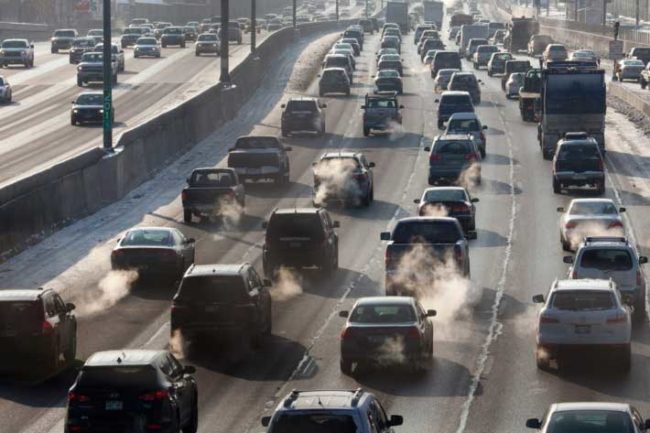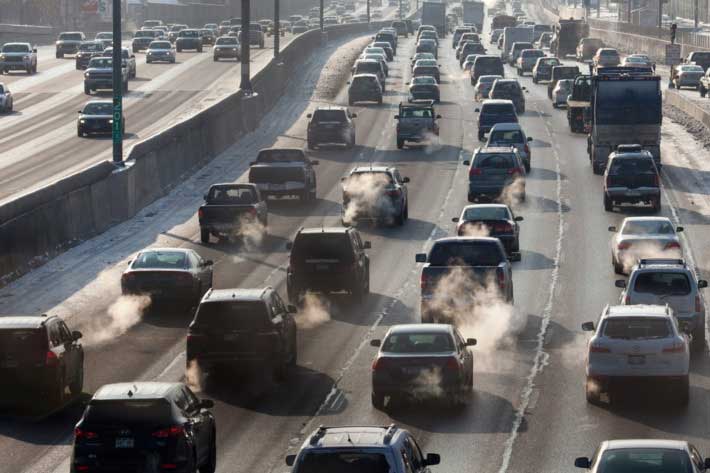 It has been on the radar for some time now, and as recently as last week I was giving a heads up that this was coming. The EPA has now finally announced that they are rolling back the existing emissions regulations.
It has been on the radar for some time now, and as recently as last week I was giving a heads up that this was coming. The EPA has now finally announced that they are rolling back the existing emissions regulations.
It’s a proposal, and not a done deal.
Notice of Proposed Rulemaking
The formal EPA document titled “Notice of Proposed Rulemaking”, is available online.
The document lays it out as follows …
The National Highway Traffic Safety Administration (NHTSA) and the Environmental Protection Agency (EPA) are proposing the “Safer Affordable Fuel-Efficient (SAFE) Vehicles Rule for Model Years 2021-2026 Passenger Cars and Light Trucks” (SAFE Vehicles Rule). The SAFE Vehicles Rule, if finalized, would amend certain existing Corporate Average Fuel Economy (CAFE) and tailpipe carbon dioxide emissions standards for passenger cars and light trucks and establish new standards, all covering model years 2021 through 2026. More specifically, NHTSA is proposing new CAFE standards for model years 2022 through 2026 and amending its 2021 model year CAFE standards because they are no longer maximum feasible standards, and EPA is proposing to amend its carbon dioxide emissions standards for model years 2021 through 2025 because they are no longer appropriate and reasonable in addition to establishing new standards for model year 2026. The preferred alternative is to retain the model year 2020 standards (specifically, the footprint target curves for passenger cars and light trucks) for both programs through model year 2026, but comment is sought on a range of alternatives discussed throughout this document. Compared to maintaining the post-2020 standards set forth in 2012, current estimates indicate that the proposed SAFE Vehicles Rule would save over 500 billion dollars in societal costs and reduce highway fatalities by 12,700 lives (over the lifetimes of vehicles through MY 2029).
The claim highlighted above is rather blatantly false. The evidence that verifies this comes from the EPA itself.
In January 2017, after an extensive technical review, based in significant part on information from industry, advocates, and other interested parties, EPA determined, in its “midterm evaluation,” that the 2022-2025 standards are readily achievable by the auto industry. EPA found that “automakers are well positioned to meet the standards at lower costs than previous estimated.” However, in April, EPA arbitrarily reversed course and claimed that the greenhouse gas emissions standards for model years 2022–2025 vehicles should be scrapped. The Administration offered no evidence other than a meager record of self-serving industry analysis to support this decision and deferred further analysis to a forthcoming rulemaking.
This is not law, it is just a proposal
This is however a different direction, one that is clearly rooted in the idea that the EPA is all about rolling back regulations and abandoning any thought about protecting the environment. It boils down to two things …
- Freeze the fuel efficiency standards at 2020 levels – Cars and light trucks should be built to get 36 miles per gallon instead of 46 miles per gallon.
- It will also roll back the waver that California has under the clean air act that enables California to have even tighter regulations.
That second one is a huge deal. California sets tighter regulations and so the entire nation falls into line because auto makers need one universal production line for vehicles that they can sell in any state. Pulling that means far looser regulations.
Andrew Wheeler, the current head of Trump’s EPA (Environmental Pollution Agency) explained it as follows …
“Our proposal aims to strike the right regulatory balance based on the most recent information and create a 50-state solution that will enable more Americans to afford newer, safer vehicles that pollute less. More realistic standards can save lives while continuing to improve the environment.”
Reactions
The response to this news is everything you can imagine it to be and more.
The Attorney Generals of 20 states have issued a joint formal press release making their stance wholly clear …
The Administration’s proposal to weaken these rules will cause the American people to breathe dirtier air and pay higher prices at the pump. If adopted, the Environmental Protection Agency and National Highway Traffic Safety Administration’s rollbacks will cost American drivers hundreds of billions of dollars. Freezing or weakening these standards puts the health of our children, seniors, and all communities at risk, and increases the rising costs of climate change for our states. This decision upends decades of cooperative state and federal action to protect our residents. We are prepared to go to court to put the brakes on this reckless and illegal plan.”
Where is this all coming from?
You can probably guess. The evidence is wholly clear …
“In April, the American Consumer Institute (ACI) organized a letter to then EPA administrator Scott Pruitt calling ‘for the revocation of California’s waiver from the Clean Air Act, which allows the state to decouple from federal policy and impose strict emission standards on automobiles.’
Eight of the eleven groups that signed the ACI letter have clear financial or organizational ties to the Koch network, including the Taxpayers Protection Alliance (TPA), FreedomWorks, the Competitive Enterprise Institute (CEI), and Americans for Tax Reform.
In May, three former members of President Trump’s transition teams — all of whom work or worked with Koch-funded and Koch-founded organizations — sent the president another letter, which also argued for the EPA to withdraw California’s legislated right to set its own tailpipe emissions standards.
State vs Federal law – who gets to decide?
In simple terms, when state law conflicts with federal law then the sixth amendment makes it clear that federal law takes precedence – the supremacy clause.
In practise it is not that simple because the states will not be rolling over on this. It is actually not just California, a joint pushback is being orchestrated by the states of Connecticut, Delaware, the District of Columbia, Hawaii, Iowa, Maine, Maryland, Massachusetts, Minnesota, New Jersey, New Mexico, New York, North Carolina, Oregon, Pennsylvania, Rhode Island, Vermont, Virginia and Washington.
The proposal, and remember it is not law, is now open for comment for the next 60 days, and that takes us into October. If 20 states then sue and fight against this, the delays will in all probability take us well into the November elections and so ultimately the real decision is going to be made via the mid-terms.
A legal case by 20 states vs the EPA will also most probably result in the supreme court having a say on this. That thought of course opens up the observation that the confirmation or rejection of Brett Kavanaugh to SCOTUS might be a potential tie breaker. His background is coal so if he is in, then strong emission regulations are out. Interestingly enough, there is a good chance that his nomination may delay until the mid-terms. It was set for September, but that now slides further and further in time because the National Archives can’t get the paperwork in place (Hat tip them them for working slowly … very very slowly on it all). If the House and the Senate flips blue in Nov, then Trump can kiss his nominee goodbye because they will not be confirming him. (It’s a beautiful thought – the GOP reaps the reward they so well deserve).
Bottom Line: Who really gets to decide the ultimate outcome here?
In all probability the Mid-term voters do.
Make sure you are registered, and that those you know are registered, because as the Gore vs Bush election demonstrated, just a handful of votes can make a real difference. In this case the impact is existential because it concerns our ongoing ability to take decisive action to address Climate Change.
Tweets
Trump's EPA formally launches attack on California's fuel-economy rules https://t.co/W6hjskh4Lu pic.twitter.com/QdWVNW0YGy
— Los Angeles Times (@latimes) August 2, 2018
The #Trump Administration has launched a brazen attack, no matter how it is cloaked, on our nation's #CleanCarStandards. CA DOJ will use every legal tool at its disposal to defend today's national standards and reaffirm the facts and science behind them #EPA #CleanerCars
— Xavier Becerra (@AGBecerra) August 2, 2018
OPEN LINK: Rolling back fuel efficiency rules for cars and trucks would put more emissions in the air than any other Trump rollback.
More. Than. Any. Other.@EPA, though, has a different take.https://t.co/O60ZcjpR3n pic.twitter.com/IlWawz9Eak
— Zack Colman (@zcolman) August 3, 2018
https://twitter.com/TrevorGHouser/status/1025067485807050752
Once again, the Trump Admin. is siding with big oil and gas companies over PA families. The @EPA’s action to weaken fuel economy standards flies in the face of what’s best for consumers and the environment. This is a betrayal of the same people @POTUS claims he is fighting for. https://t.co/mgsTa28qq8
— Governor Tom Wolf (@GovernorTomWolf) August 2, 2018
Our new report explains why @EPA lacks legal authority to withdraw California’s existing waiver to set its own vehicle emissions standards: https://t.co/8AP0FQYraq
— Jayni Hein (@JayniHein) August 2, 2018
